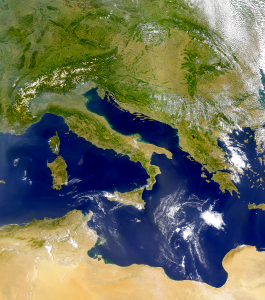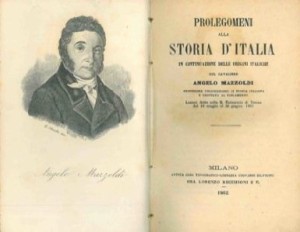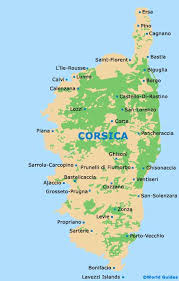Angelo Mazzoldi
Italy
Italy seems to have an uncertain etymology; Thucydides claims that Italos, the Sicilian king gave his name to Italy, while more recently Emilio Spedicato(h) considers that ”the best derivation we believe to be the one proposed by the Italian nuclear engineer Felice Vinci (1998), in his monograph claiming a Baltic setting for the Homeric epic: he derives Italia from the rare Greek word aithalia, meaning the smoking one.” This is thought to be a reference to Italy’s many volcanoes.
Italy today is comprised of territory south of the Alps on mainland Europe including a very large boot-shaped peninsula, plus Sicily, Sardinia and some smaller island groups, which along with the French island of Corsica virtually enclose the Tyrrhenian Sea.
The earliest proposal that Italy could be linked with Atlantis came from Angelo Mazzoldi in 1840 when he claimed that before Etruria, Italy had been home to Atlantis and dated its demise to 1986 BC. Mazzoldi expressed a form of hyperdiffusion that had his Italian Atlantis as the mother culture which seeded the great civilisations of the eastern Mediterranean region(b).
Some of Mazzoldi’s views regarding ancient Italy were expanded on by later scholars such as Camillo Ravioli, Ciro Nispi-Landi, Evelino Leonardi, Costantine Cattoi, Guido DiNardo and Giuseppe Brex. Ravioli sought to associate the Maltese island of Gozo with his proposed Atlantis in Italy.
The Italian region of Lazio, which includes Rome, has had a number of very ancient structures proposed as Atlantean; Monte Circeo (Leonardi) and Arpino(a) (Cassaro). Another aspect of Italian prehistory is the story of Tirrenide, which was described as a westward extension of the Italian landmass into the Tyrrhenian Sea during the last Ice Age, with a land bridge to a conjoined Sardinia and Corsica. At the same time, there were land links to Sicily and Malta, which were all destroyed as deglaciation took place and sea levels rose.
 It is surprising that so few researchers have commented on Italy’s part in Plato’s Atlantis narrative considering that he twice, without any ambiguity, informs us that the Atlantean domain extended as far as Tyrrhenia (modern Tuscany).
It is surprising that so few researchers have commented on Italy’s part in Plato’s Atlantis narrative considering that he twice, without any ambiguity, informs us that the Atlantean domain extended as far as Tyrrhenia (modern Tuscany).
Crit.114c. So all these, themselves and their descendants dwelt for many generations bearing rule over many other islands throughout the sea and holding sway besides, as was previously stated, over the Mediterranean peoples as far as Egypt and Tuscany. Tim.25a/b. Now in this island of Atlantis there existed a confederation of kings, of great and marvellous power, which held sway over all the island, and over many other islands also and parts of the continent; and, moreover, of the lands here within the Straits they ruled over Libya as far as Egypt, and over Europe as far as Tuscany. (Bury)
The quotation from Timaeus is most interesting because of its reference to a ‘continent’. Some have understandably but incorrectly claimed that this is a reference to America or Antarctica, when quite clearly it refers to southern Italy as part of the continent of Europe. Moreover, Herodotus is quite clear (4.42) that the ancient Greeks knew of only three continents, Europe, Asia and Libya.
Philo of Alexandria (20 BC-50 AD) in his On the Eternity of the World(g) wrote “Are you ignorant of the celebrated account which is given of that most sacred Sicilian strait, which in old times joined Sicily to the continent of Italy?” (v.139).>The name ‘Italy’ was normally used until the third century BC to describe just the southern part of the peninsula(e).<Some commentators think that Philo was quoting Theophrastus, Aristotle’s successor. This would push the custom of referring to Italy as a ‘continent’ back near to the time of Plato. More recently, Armin Wolf, the German historian, when writing about Scheria relates(f) that “Even today, when people from Sicily go to Calabria (southern Italy) they say they are going to the ‘continente’.” This continuing usage is further confirmed by a current travel site(d) and by author, Robert Fox[1168.141]. I suggest that Plato used the term in a similar fashion and can be seen as offering the most rational explanation for the use of the word ‘continent’ in Timaeus 25a.
When you consider that close to Italy are located the large islands of Sicily, Sardinia and Corsica, as well as smaller archipelagos such as the Egadi, Lipari and Maltese groups, the idea of Atlantis in the Central Mediterranean can be seen as highly compatible with Plato’s description.
If we accept that Plato stated unambiguously that the domain of Atlantis included at least part of southern Italy and also declared that Atlantis attacked from beyond the Pillars of Heracles, then this appellation could not be applied at that time to any location in the vicinity of the Strait of Gibraltar but must have been further east, probably not too far from Atlantean Italy. This matches earlier alternative locations recorded by classical writers who placed the ‘Pillars’ at the straits of Messina or Sicily. I personally favour Messina, unless there is stronger evidence that some of the islands in or near the Strait of Sicily such as the Maltese or Pelagian Islands or Pantelleria were home to the ‘Pillars’.
(a) http://www.richardcassaro.com/hidden-italy-the-forbidden-cyclopean-ruins-of-giants-from-atlantis
(b) Archive 2509P (Eng) Archive 2943 (Ital)
(c) Archive 2946
(d) Four Ways to Do Sicily – Articles – Departures (archive.org)
(e) https://profilbaru.com/article/Name_of_Italy *
(f) Wayback Machine (archive.org)
(g) http://www.earlychristianwritings.com/yonge/book35.html
(h) http://2010-q-conference.com/ophir/ophir-27-10-09.pdf
Ravioli, Camillo
 Camillo Ravioli (1820-1907) was the author of an 1859 monograph that was republished in 1998 as Prima Tellus- La dissertazione sulla Gigantèa dell’isola di Gozo[1061] which includes an introductory essay by Siro Tacito. Ravioli discusses Gozo and its relationship with an Italian Atlantis. He was obviously influenced by the better known Angelo Mazzoldi.
Camillo Ravioli (1820-1907) was the author of an 1859 monograph that was republished in 1998 as Prima Tellus- La dissertazione sulla Gigantèa dell’isola di Gozo[1061] which includes an introductory essay by Siro Tacito. Ravioli discusses Gozo and its relationship with an Italian Atlantis. He was obviously influenced by the better known Angelo Mazzoldi.
>Stel Pavlou‘s atlantipedia.com website, now offline, informed us that Ravioli “argued that Atlantis once spanned an area that included Gozo, Sardinia, Sicily and mainland Italy”.<
Brex, Giuseppe
Giuseppe Brex (1896-1972) was an Italian writer who followed in the footsteps of Angelo Mazzoldi and promoted the idea of Italy as the source of civilisation in the Mediterranean, with perhaps the Sicilians contributing disproportionally to the cultural development of Italy. His views were expressed in his 1944 book Saturnia Tellus. There is very little about Brex on the Internet except an excerpt from a book, Roma prima di Roma (Rome before Rome) by Paolo Galiano(a).
Mazzoldi, Angelo
Angelo Mazzoldi (1799-1864) was born in Montichiari, near Brescia in northern Italy. He studied law and also wrote on historical subjects.  His best known was published in Milan in 1840 with the snappy title of Delle origini italiche e della diffusione dell’incivilimento italiano all’Egitto, alla Fenicia, alla Grecia ea tutte le nazioni asiatiche poste sul Mediterraneo (Of the Italic origin and spread of civilization Italian Egypt, Phoenicia, Greece and all Asian nations located on the Mediterranean)(a) . This provoked a critical response from the journalist Aurelio Bianchi-Giovini (1799-1862) and a debate ensued over the following two years (c).
His best known was published in Milan in 1840 with the snappy title of Delle origini italiche e della diffusione dell’incivilimento italiano all’Egitto, alla Fenicia, alla Grecia ea tutte le nazioni asiatiche poste sul Mediterraneo (Of the Italic origin and spread of civilization Italian Egypt, Phoenicia, Greece and all Asian nations located on the Mediterranean)(a) . This provoked a critical response from the journalist Aurelio Bianchi-Giovini (1799-1862) and a debate ensued over the following two years (c).
Emiliana Pasca Noether in her Roots of Italian Nationalism 1700-1815[0958], recounts how Mazzoldi claimed that before Etruria, Italy had been home to Atlantis and dated its demise to 1986 BC and is recalled locally as the destruction of Tirrenide.
Similarly, Pierre Vidal-Naquet described Mazzoldi as having “carved out a place for Atlantis in the Italians’ own history”[0580]. Mazzoldi expressed a form of regional hyperdiffusion that had his Italian Atlantis as the mother-culture which seeded all the great civilisations of the eastern Mediterranean region.
Some of Mazzoldi’s views on ancient Italy were expanded on by later scholars such Camillo Ravioli, Ciro Nispi-Landi, Evelino Leonardi, Constantine Cattoi, Guido DiNardo and Giuseppe Brex (b).
(a) https://archive.org/details/delleoriginiita02mazzgoog
>(c) Archive 2509 (Eng) Archive 2943 (Ital)<
Tirrenide
 Tirrenide is the name given to a large landmass that was supposedly submerged off the west coast of Italy, which subsequently gave its name to the Tyrrhenian Sea. Some of these ideas were proposed in 1840 by Angelo Mazzoldi in Delle Origini Italiche who also placed Atlantis in this ancient Italy.
Tirrenide is the name given to a large landmass that was supposedly submerged off the west coast of Italy, which subsequently gave its name to the Tyrrhenian Sea. Some of these ideas were proposed in 1840 by Angelo Mazzoldi in Delle Origini Italiche who also placed Atlantis in this ancient Italy.
The name ‘Tirrenide’ was first proposed by C.J. Forsyth Major in 1882.
>The idea of the existence of such a large sunken land is seemingly supported by Pliny the Elder in Natural History (III, Of Italy) where he compared the shape of Italy to an oak leaf: “I may premise by observing that this land very much resembles in shape an oak leaf, being much longer than it is broad…” which seems a far cry from the boot-like shape used to describe Italy today.<
Some commentators, such as Pier Paolo Cavallin(e) [1049] and Evelino Leonardi, have tried to link the story with Atlantis. Leonardi’s contribution to the belief that there was an Italian Atlantis is explored in depth by Marco Pucciarni(d). Von Klaproth speculated that it had been a vast island that filled most of the Western Mediterranean. Others suggest the vicinity of Calabria or part of a landbridge between Italy and North Africa.
The legend of Tirrenide is frequently linked with the island of Sardinia (along with Corsica). This is the view of Leonardo Melis who considers his Tirrenide to have been a rival empire of Atlantis(c).
Constantino Cattoi expressed some odd views involving an extension of Atlantis reaching into the Mediterranean as far as Italy and added that just offshore from Ansedonia, 70 miles north of Rome may have been the location of the Atlantean capital! This concept has now been adopted by Francesco Palambo.
Cattoi also announced that he had located three of the cities of Tirrenide between Porto Santo Stefano and Isola del Giglio, but he died without being able to find funding for the underwater exploration that would have proved his hypothesis(b).
A more recent view of Tirrenide at the end of the last Ice Age is available online(a).
(a) See: Archive 2510 (b) https://www.paginecuriose.it/2019/07/28/atlantide-vicino-allargentario/ (Italian)
(c) La Sardegna e Atlantide (archive.org) (Italian)
(e) Pier Paolo Cavallin – Atlantisforschung.de (atlantisforschung-de.translate.goog)
Italian Atlantology
Italian Atlantology can be traced back to the 16th century when Fracastoro, Garimberto and Ramusio, identified the Americas as Atlantis. In fact, we should look to the 15th century when Ficino was the first to translate Plato’s entire works into Latin giving medieval Europe its first access to the complete Atlantis texts. Not much happened until 1788 when Carli attributed the destruction of Atlantis to a close encounter with a comet. In 1840, Angelo Mazzoldi proposed Italy as the location of Atlantis and as the hyper-diffusionist mother culture of the great civilisations of the Eastern Mediterranean region. He was followed by others such as Giuseppe Brex(b).
Two years after Donnelly published his Atlantis in 1882 the Italian, D’Albertis followed him and opted for the Azores as the remains of Atlantis.
Not much developed in pre-war Italy apart from Russo’s journal which ran from 1930 until 1932. After the war, other Atlantis journals were established by Gianni Belli(d) in 1956 and Bettini in 1963 and reportedly one in Trieste by Antonio Romain & Serge Robbia(c).
After that, there was a wide range of theories advanced by Italian researchers. Spedicato located Atlantis in Hispaniola, Stecchini opted for São Tomé, Barbiero, who although Croatian by birth was an admiral in the Italian Navy nominated the Antarctic as the home of Atlantis before the Flem-Aths published their Antarctic ideas. Bulloni chose the Arctic, Pincherle identified the Mandaeans as the last of the Atlanteans and Monte links Thera with Tarshish.
In recent years the most widely reported Atlantis theory to emanate from Italy came from Sergio Frau who advocates Sardinia as the original Atlantis. However, this idea is not new having been promoted by Poddighe in 1982. Frau has subsequently been supported by other commentators such as Tozzi and Novo. I cannot help feeling that there might be a trace of nationalism underlying this theory, a suspicion that I have held regarding writers of other nationalities.
The latter end of the 20th century saw the development of the Internet which enabled the instant promotion of Atlantis theories, both silly and serious, to a global audience. Italy was no exception, where websites, such as Edicolaweb that are sympathetic to the exploration of historical mysteries emerged(a).
More recently, Marin, Minella & Schievenin had The Three Ages of Atlantis[0972] published in 2014. This is an English translation of their original 2010 work. In it, they suggest that Atlantis had originally existed in Antarctica and after its destruction survivors established two other Atlantises in South America and the Mediterranean. Perhaps more credible is the theory of Capuchin friar, Antonio Moro who, in 2013, suggested that Atlantis had included Iberia, the south coast of France and the west coast of Italy![0974]
> I must include here a mention of the website of Pierluigi Montalbano where he and various guest authors have written many interesting articles, particularly about Sardinia and its Nuraghic past as well as Atlantis. The site is well worth a browse and as it has Google Translate built-in it is accessible to all(e).<
(a) https://web.archive.org/web/20140625081839/https://edicolaweb.net/cerca.htm
(c) Atlantis, Vol 16, No.2, April 1963.
(d) 025_028.PDF (uranialigustica.altervista.org) *
(e) https://pierluigimontalbano.blogspot.com/2014/04/uno-tsunami-cancello-la-civilta-nuragica.html *
Corsica .
Corsica together with Sardinia was the home of megalith builders long before it became an Etruscan colony. The island was seldom mentioned as a  location for Atlantis until the end of the 18th century when>according to Joscelyn Godwin [0746.36],<Antoine Court de Géblin proposed Corsica and Sardinia as the location of Atlantis.
location for Atlantis until the end of the 18th century when>according to Joscelyn Godwin [0746.36],<Antoine Court de Géblin proposed Corsica and Sardinia as the location of Atlantis.
>However, Atlantisforschung claims that as far as is known, Corsica was first associated with Atlantis, later, in 1840. At that time it was the lawyer Angelo Mazzoldi, an ardent Italian nationalist, who claimed in a treatise that Italy had once been Atlantis, the center of which was somewhere near Corsica. He dated the sinking of Atlantis to 1986 BC(e).<
Corsica did not feature again for over a century until 1929 when this idea was proposed at a meeting of the Society for Atlantis Studies, held in the Sorbonne in Paris, a delegate threw two tear gas bombs in order to prevent the dissemination of such ‘heresy’.
It may be worth considering that the Weshesh, listed as one of the Sea Peoples, have been identified with the inhabitants of Corsica among others. In the latter part of the 2nd millennium BC, a civilisation known as the Torreans occupied the region around Ajaccio. Like the Nuraghic people in nearby Sardinia, they also built towers, but smaller in size.
Before the Torreans, there was a string of megalithic dolmens stretching from southern Corsica across to northern Sardinia as if outlining a pilgrimage route. Frederico Bardanzellu’s website(a) offers more information on this and other aspects of the prehistory of these two islands, including a study of any possible astronomical significance that might be deduced from the orientation of the dolmens on both islands.(d)
Luigi Usai is currently (2021) promoting [1814] the idea that a conjoined Sardinia and Corsica had constituted the island of Atlantis!(c) He has named Sulcis at the southern end of Sardinia as the location of its capital.
In July 2021 I was sent a number of images that purported to show anomalous underwater images in the Central Mediterranean northeast of Malta. At first sight, they appeared to show extensive manmade features. However, further investigation by the person who sent them to me eventually discovered that the images were the consequence of the flawed computer interpretation of sonar data. In December 2021 Luigi Usai produced the same flawed imagery as evidence that he had discovered a lost submerged civilisation!
So that there is no misunderstanding let me state that I have advocated a Central Mediterranean location for Atlantis for some years. If Sardinia and/or Corsica hold that location, I am more than happy to congratulate Usai and Frau. But, I am not convinced by satellite imagery that has so often been proven to be flawed.
The Torreans have only been recognised since 1954, thanks to the work of archaeologist Roger Grosjean (1920-1975). A 1966 article by Grosjean is available online(b). The title of his paper, The Mysterious Horned Warrior – Torreans of the Isle of Corsica, brings to mind the horn-helmeted Sea Peoples depicted at Medinet Habu, a similarity not lost on Grosjean.
‘The Sea Peoples’ have been suggested, by a number of Atlantologists, as a collective name for the Atlantis federation.
(a) http://www.museodeidolmen.it/englishdefault.html
(c) https://www.atlantisfound.it/2021/01/24/why-didnt-scientists-find-atlantis-before-usai-luigi/
(d) https://www.museodeidolmen.it/englisharcheoastr.html
(e) Corsica (island) – Atlantisforschung.de (atlantisforschung-de.translate.goog) *
